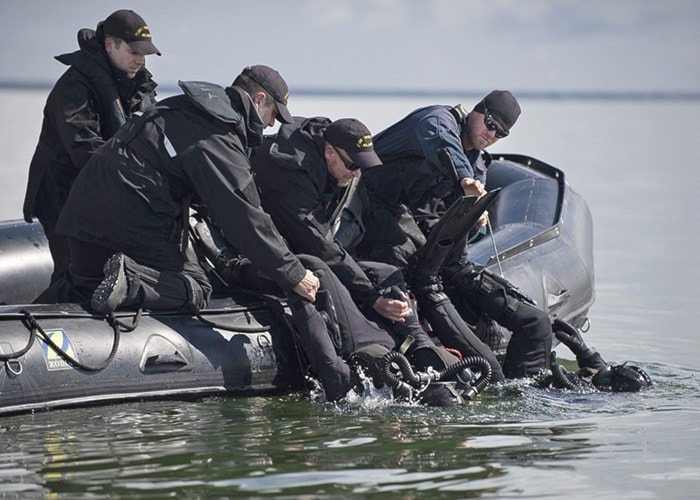There’s something about exploring unknown waters and diving deep in the depths of the ocean that Hector Ladron De Guevara loves.
Ever since he was a four-year-old growing up in Mexico, Ladron De Guevara remembers seeing divers climbing in and out of the water off the coast of the Mayan Riviera, but wasn’t sure exactly what they were doing.
After graduating from high school, he decided to complete an open water diving course. Shortly after, he joined the Royal Canadian Navy in 2001, but continued his passion for diving as a civilian.
Now, Ladron De Guevara is a leading seaman with the Fleet Diving Unit (Pacific), which is based out of CFB Esquimalt, and is part of the team responsible for clearing underwater mines, as well as underwater welding, cutting and photography, among other things.
“There’s something to be said about a place that obviously you don’t belong. When you go down there everything is different, there’s absolutely no noises, you don’t have to hurry up to do anything, you’re just there,” Ladron De Guevara said. “Everything is different underwater and the ability to breathe underwater, to me, is super cool.”
Most recently, Ladron De Guevara participated in Operation Open Spirit in Lithuania, an annual multinational operation dedicated to clearing explosive remnants of war in the Baltic Sea.
As part of the operation in the waters surrounding the Klaipeda Harbour, Ladron De Guevara, along with other members of the team, helped identify and dispose of eight mines.
In WWI and WWII, the Baltic Sea saw heavy fighting, which included air bombardment, naval gunfire support, mine laying and submarine warfare. However, as a result, many mines remain unexploded, presenting a potential safety hazard in the area.
It can be a dangerous job to say the least.
Using a system that takes sonar imagery of the bottom of the ocean, they assess the photos to see if there are potentially any unexploded mines. Divers are then given the coordinates and Ladron De Guevara and the team put on their diving gear to investigate.
Sometimes they investigate thinking it could be a mine and it turns out to be a rock. But Ladron De Guevara said they still have to approach all objects with care.
“You can’t take that for granted. You still have to approach it with care and as if it was a real one,” Ladron De Guevara said, adding he was diving an average of 25 metres and helped clear two square kilometres of ocean. “You just shut down and go with it.”
The Canadian diving team was responsible for conducting a controlled detonation on one of the eight mines.
“With this particular mine, it was old and pretty much rusted through. We didn’t even touch them, we just placed charges on it and blew them up,” Ladron De Guevara said. “We keep the movement minimal.”
Operation Open Spirit was Ladron De Guevara’s first official operation with the diving unit. Next he’ll travel to San Diego for an underwater exercise.
Operation Open Spirit was conducted from May 13 to 27 with the deployment of 11 Royal Canadian Navy divers and support personnel — nine from Fleet Diving Unit (Atlantic) and two from Fleet Diving Unit (Pacific) — working alongside personnel from 12 partner nations.
